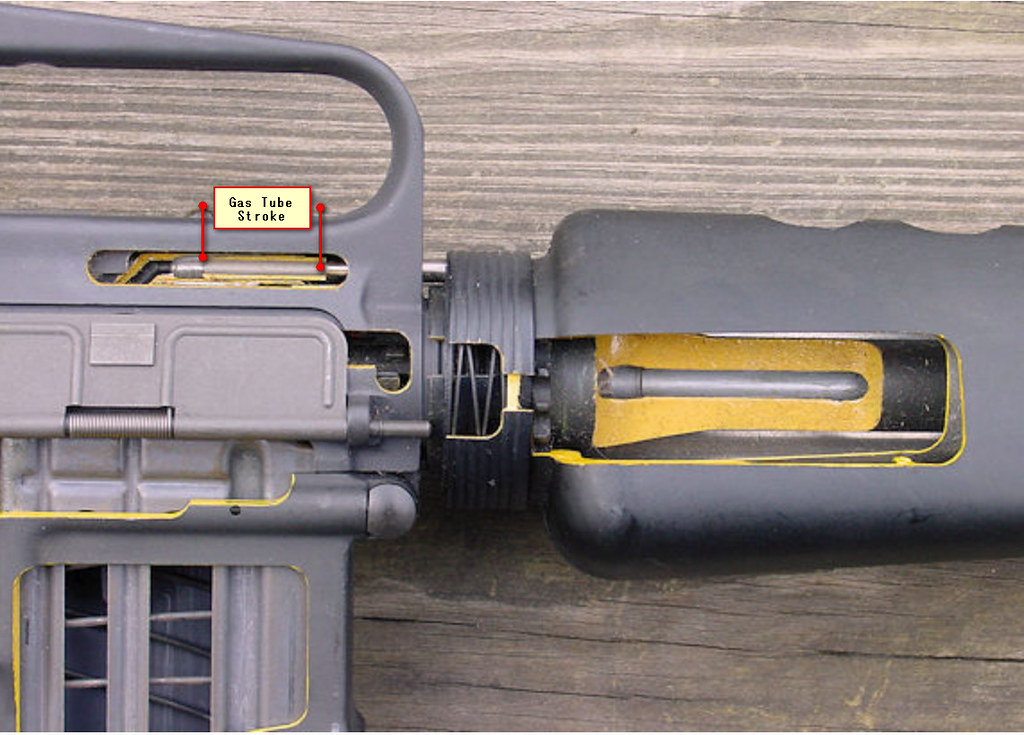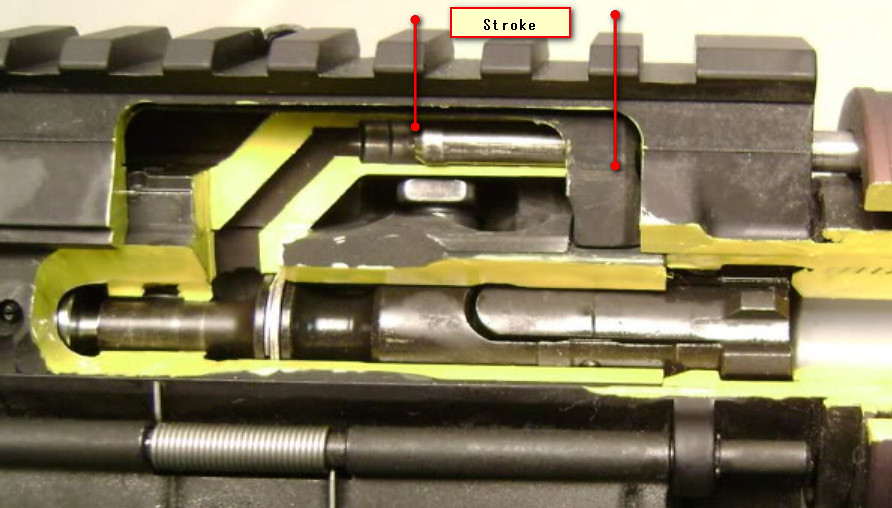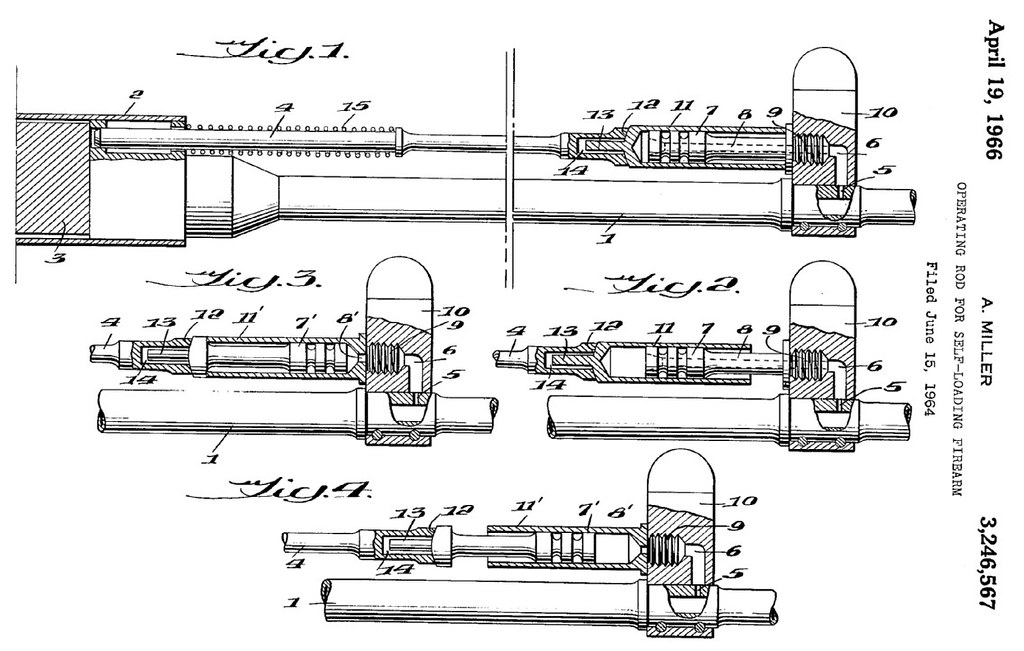From a wensource used by Wikipedia on the AR-15:
"Enter the Armalite. In the year of 1957 The US Army requests the Armalite Division of the Fairchild Aircraft Corp to develop a rifle of .22 caliber, lightweight, select-fire, and capable to penetrate the standard steel helmet at 500 meters. The Eugene Stoner, then a designer at the Armalite, began to develop this rifle, based on his earlier design, 7.62mm AR-10 battle rifle. At the same time, experts at the Sierra Bullets and the Remington, in conjunction with Armalite, began do develop a new .22 caliber cartridge, based on the .222 Remington and .222 Remington Magnum hunting cartridges. This development, initially called the .222 Remington Special, was finally released as .223 Remington (metric designation 5.56x45mm). Next year Army tests new rifles, known as Ar-15, and rejects these in favor of the M14. Feeling that the Ar-15 rifle has poor chances to compete with the recently adopted M14 in the US Military, in 1959 the Fairchild Corp, a parent company of the Armalite, sells all rights and manufacturing documentation for this rifle to the Colt's Patent Firearms Manufacturing Company, which had long-time relations with US Military and proven track of selling military guns both in USA and abroad. Colt instantly begins aggresive marketing campaign for the new rifle, stressing its accuracy, low recoil, light weight and modern design. In the 1962, US DoD Advanced Research Projects Agency (ARPA) purchases 1000 AR-15 rifles from Colt and sends those rifles to the South Vietnam, for field trials. Same year brings glowing reports about the effectiveness of the new "black rifle", used by South Vietnamese forces.
"Following the delays in introduction of the ill-fated 'next generation' SPIW system and production troubles with M14, in 1963 Colt receives contracts from US Government for 85 000 rifles for US Army (designated as XM16E1) and for further 19 000 rifles for US Air Forces (designated M16). The US AF M16 was no more than an AR-15 rifle with appropriate markings. The XM16E1 differed from AR-15/M16 by having an additional device, the so called "forward assist", which was used to manually push the bolt group in place in the case of jams. Next year US Air Forces officially adopted new rifle as M16. Same year US Army adopted the XM16E1 as a limited standard rifle, to fill the niche between discontinued 7.62mm M14 rifle and the forthcoming SPIW system (which newer got past the prototype and trial stages).
"With rapidly growing presence of US troops in Vietnam, in 1966 US Government makes the first large purchase of the Ar-15 / M16 rifles, ordering 840 000 rifles for US Armed forces, worth almost $92 millions, and in 1967 US Army officially adopts the XM16E1 rifle as a standard "US Rifle, 5.56mm, M16A1".
"During immediately following years, a number of negative reports apears from Vietnam. M16A1 rifles, issued to US troops in the Vietnam, severely jammed in combat, resulting in numerous casualties. There were some causes for malfunction. First of all, during the introduction of the new rifle and its ammunition into the service, US Army replaced originally specified Dupont IMR powder with standard ball powder, used in 7.62x51mm NATO ammunition. The ball powder produced much more fouling, that quickly jammed the actions of the M16 unless the gun was cleared well and often. It also had different pressure curve, resulting in increased stress on operating parts of the gun. This pitifully combined with the fact that the initial M16 rifles were promoted by the Colt as "low maintenance", so, for the sake of economy, no cleaning supplies were procured for new M16 rifles, and no weapon care training was conducted fro the troops. As a result, soldiers did not knew how to clean their rifles, and had no provisions for cleaning, and things soon turned bad. Another cost-saving measure on the part of the Army was to give up with cromium plation of the barrel bore and bolt group, which made these parts much more sensitive to corrosion and rust that originally designed.
"After several dramatic reports in US press and Congressional investigation of the troubles, several actions were taken to remedy the problems. The 5.56mm ammunition was now loaded using different powders that produce much less residue in the gun action. The barrel, chamber and bolt of the rifles were chrome-lined to improve corrosion resistance. Cleaning kits were procured and issued to troops, and a special training programs were developed and conducted ever since. Earliest cleaning kits could be carried separate from rifle only, but since circa 1970 all M16A1 rifles were manufactured with the containment cavity in the buttstock, that held the cleaning kit. At the same time (circa 1970) the new 30 rounds magazines were introduced into service instead of the original 20 rounds ones, to equal Soviet and Chinese AK-47 assault rifles, which had 30-rounds magazines from the very beginning."
http://world.guns.ru/assault/usa/m16-m16a1-m16a2-m16a3-e.html
Note that Colt claimed the M-16 was low maintenance, to the point the military didn't buy cleaning kits, or even teach the men how to clean one correctly. Just a powder change and no chrome was not the only problem, since Colt claimed they were low maintenance, and probably dirt proof, as evidenced by the anti-dirt features.









